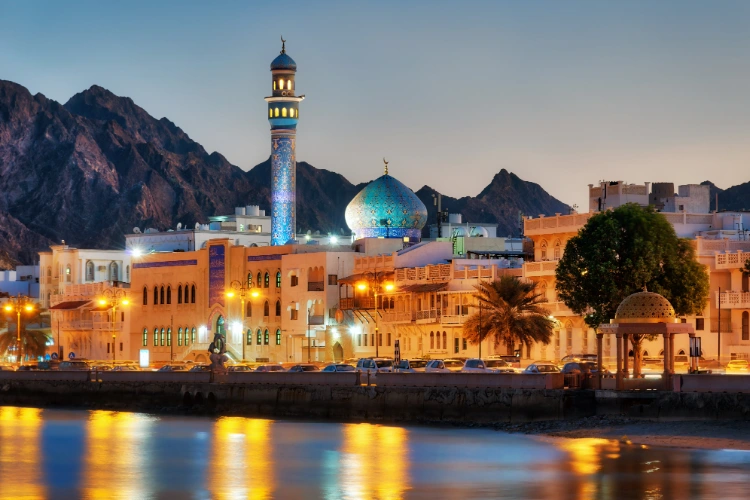Oman eVisa
99,7%
visa approval rate
700K+
processed applications
24/7
experts by your side

Do you need a visa for Oman?
Other nationalities, including all European Union member states or the United States, can enter the country only with their passport for 14 days. If you are a passport holder from any of those countries and you want to stay longer, then you must apply for a visa.
What is the Oman eVisa?
With a Tourist eVisa, you can visit Oman for tourism and leisure purposes. You have two options to choose from, depending on your needs:
- Single-entry Tourist eVisa: you can stay for a maximum of 30 days.
- Multiple-entry Tourist eVisa: you can stay for a maximum of 30 days each time you enter the country in a 1-year period.
Who can apply for the eVisa to Oman?
How long can you stay in Oman with a Tourist eVisa?
- Single-entry Tourist eVisa: you can stay a maximum of 30 days.
- Multiple-entry Tourist eVisa: you can stay a maximum of 30 days each time you enter Oman in a 1-year period.
What are the requirements to apply for the eVisa to Oman?
- Copy of your valid passport
- Current personal photograph
- Email address to receive the visa
How to apply?
Complete the application online
Prepare your passport and fill in our simple online form in 5 minutes.
Receive your eVisa
We will send you your approved eVisa within a few days, without you having to go anywhere!
Start your journey
On arrival, show your passport and your approved eVisa
Where to submit your visa application?
Common reasons for a rejected application
- Criminal history
- Incomplete documentation
- Overstayed in the country
- Using a previously lost passport
- Overstayed previous visas
Why choose Visagov
Higher chance of approval
Over 80% of rejections are due to avoidable mistakes. We use AI, OCR and biometrics to reduce errors and ensure your application is approved.
Money-back guarantee
It is unlikely, but it could happen that your application is rejected. In that case, we will refund all the government fees.
Experts by your side
Do you have a question? Write or call us! We are here to help you in every step of the way.
Faster & easier
Official forms tend to be complicated. With us, the entire process is carried out online in a single, simplified form in the language of your choice.
How much do these visas cost?
- Multiple-entry Tourist eVisa: 165 USD
- Single-entry Tourist eVisa: 34 - 87 USD
The processing fees, already included in the prices above, have a cost of 34 USD. These fees cover 24/7 customer service and a full review by our experts ensuring the success of your application.
Processing time
- Single-entry Tourist eVisa: 4 days
- Multiple-entry Tourist eVisa: 4 days
How far in advance do I need to apply?
Factors affecting eVisa processing times
- Incomplete information
- Typos or incorrect details
- Peak travel seasons
- Mismatch between passport and application details
Check the status of your eVisa application
Types of visas for Oman
- Single-entry Tourist eVisa: to visit the country for tourism and leisure.
- Multiple-entry Tourist eVisa: to visit the country for tourism and leisure multiple times during one year.
- 23A and 23B Airport Transit Visa: for travelers flying to Oman on the way to another destination.
- 27A Short Transit Visa: allows all nationals to do a brief stay in Oman on their way to another country.
- 12B Truck Driver Visa: allows truck drivers and their helpers to transport fruits and vegetables in and out of Oman.
- 25A Multi-entry Visit Visa: allows multiple entries to a professional or business person that is employed in specific jobs.
- 25D Multi-entry Visit Visa: it allows United States nationals to enter the country for a specific reason. It is valid for 5 years.
What documents do I need to enter Oman?
- Passport with 6 months validity remaining at the time of entry
- Approved visa (if needed)
- Yellow fever vaccination certificate if you are coming from a country where the disease is endemic
FAQs
Keep in mind there is a fee for each day you overstay, so make sure to settle this situation before you leave. There is an option to do it online at the Royal Oman Police official website.















































































